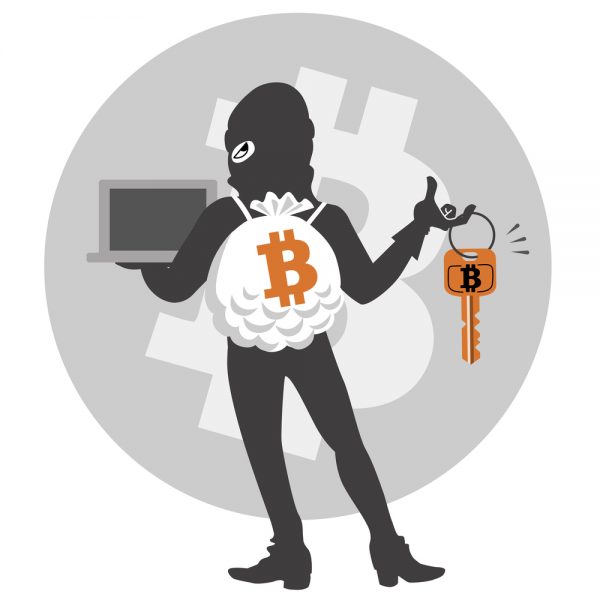GORO ransomware is yet another version of GlobeImposter ransomware. This one is extremely invasive and becomes a major troublemaker of this midsummer.

Security software detects the virus under a range of names. In a number of cases, the detecting tools label it with a name that mentions GobeImposter ransomware.
The infection owes its common name GORO to the email specified in its notification. This notification is available in any folder containing encrypted files on a host machine. That is to say, GORO executes encryption payload. This aims at depriving the users of access to their data. As the infection holds data hostage the users are supposed to read the attacker’s message and spend some bitcoins to redeem their data.
The infection propagates over a number of channels. This includes, but not limited to, exploit kits, phishing, Trojan uploads. It is also able to propagate over the network. This makes it a deadly threat for corporate users. A single installation on a corporate device enables the malware to reach and compromise other machines in the same network. In this case, every affected device would get its individual ransom demand. It may be case-specific, but there is only one payment method: Bitcoin.
GORO implements GobeImposter approach to files encryption. Unlike most of the other ransomware families, GobeImposter varieties do not scan memory for any extensions. Instead, to ensure the victims read its demand for ransom, the GORO encryption trojan just does not touch certain folders.
Those white-listed folders presumably contain essential system files. The hackers believe this measure ensures the system survives. Just like any ransomware, it does not really care any user’s interests. The system, however, needs to remain functional as the users are supposed to read the ransom note right from the affected device.
This approach is likely to fail. That is to say, the white-listing may fail to cover all the essential items. Many experience system failures due to the invasion.
The encryption cycles data with a military-grade cipher. There is no plausible means to decrypt the scrambled files without the private key. That does not whatsoever encourage users to transfer the fee to the crooks. Instead, try smart workarounds below to get rid of GORO encryption-for-ransom without any Bitcoins.
Automatic removal of GORO ransomware
The benefits of using the automatic security suite to get rid of this infection are obvious: it scans the entire system and detects all potential fragments of the virus, so you are a few mouse clicks away from a complete fix.
- Download and install recommended malware security suite
- Select Start Computer Scan feature and wait until the utility comes up with the scan report. Proceed by clicking on the Fix Threats button, which will trigger a thorough removal process to address all the malware issues compromising your computer and your privacy.
Restore files locked by GORO file virus
new Locky variant aka GORO ransomware represents a unique category of malicious software whose attack surface reaches beyond the operating system and its components, which is why removing the virus itself is a part of the fix only. As it has been mentioned, it encrypts one’s personal information, so the next phase of the overall remediation presupposes reinstating the files that will otherwise remain inaccessible.
-
Launch data recovery software
Similarly to the rest of its fellow-infections, GORO file virus most likely follows an operational algorithm where it erases the original versions of the victim’s files and actually encrypts their copies. This peculiarity might make your day, because forensics-focused applications like Data Recovery Pro are capable of restoring the information that has been removed. As the virus further evolves, its modus operandi may be altered – in the meanwhile, go ahead and try this.
-
Take advantage of Volume Shadow Copy Service
This technique is based on using the native backup functionality that’s shipped with Windows operating system. Also referred to as Volume Snapshot Service (VSS), this feature makes regular backups of the user’s files and keeps their most recent versions as long as System Restore is on. GORO ransomware hasn’t been found to affect these copies therefore the restoration vector in question is strongly recommended. The two sub-sections below highlight the automatic and manual workflow.
- a) Use Shadow Explorer
Shadow Explorer is an applet that provides an easy way of retrieving previous versions of files and folders. Its pro’s include an intuitive interface where the computer’s entire file hierarchy is displayed within one window. Just pick the hard disk volume, select the object or directory to be restored, right-click on it and choose Export. Follow the app’s prompts to get the job done.

- b) Use file properties
Essentially, what the above-mentioned Shadow Explorer tool does is it automates the process that can otherwise be performed manually via the Properties dialog for individual files. This particular approach is more cumbrous but just as effective as its software-based counterpart, so you can proceed by right-clicking on a specific file, which has been encrypted by GORO file virus, and selecting Properties in the context menu. The tab named Previous Versions is the next thing to click – it displays available versions of the file by date of the snapshot creation. Pick the latest copy and complete the retrieval by following the prompts.

-
Data backups work wonders
Ransomware like GORO file virus isn’t nearly as almighty and destructive in case you run regular file backups to the cloud or external data media. The virus itself can be completely removed in a matter of minutes, and the distorted information can then be just as easily recovered from the backup. Luckily, this is a growing trend, so ransom Trojans are hopefully going to become less subversive in the near future.
Verify thoroughness of the removal
Having carried out the instructions above, add a finishing touch to the security procedure by running an additional computer scan to check for residual malware activity
